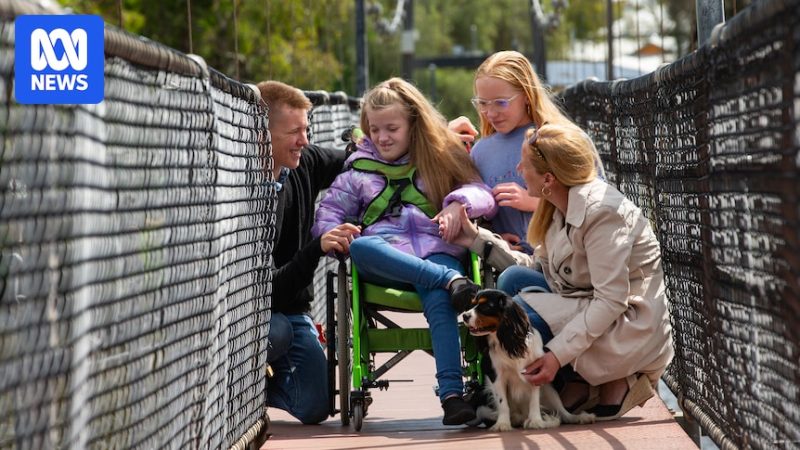The Kids Research Institute experiment helps diagnose rare disease

Charlotte Patterson has had 64 surgeries in her short 10 years and takes 16 different medications a day.
The young girl has cerebral palsy, intellectual disability, a heart defect and other physical disabilities.
She is tube fed and suffers seizures.
But for a decade, doctors didn’t know why.
Charlotte Patterson bonds with her mum Laura West. (Supplied: The Kids Research Institute Australia)
Charlotte’s mum, Laura West, said she had been waiting for a diagnosis since Charlotte was born.
“It was just really quite overwhelming as a mum to be dealing with a newborn baby that was so unwell and have no idea as to actually what the cause of all of those issues were,” she said.
Charlotte was born with multiple health complications. (Supplied: Laura West)
Based in the Wheatbelt town of Northam, the family has also struggled with the hour-and-a-half journey to Perth for diagnosis appointments.
“[I was] spending sometimes weeks or months at a time down in hospital with Charlotte,” Ms West said.
“I guess I felt isolated.”
Cracking the code
After a five-year experiment, doctors have concluded that a random genetic variation is responsible.
Ms West said there were only four known cases worldwide.
Head of the translational genetics team at The Kids Research Institute, Vanessa Fear, said the variation was like making a spelling mistake which altered the meaning of a whole sentence.
Dr Fear (left) has been working on the experiment for years. (Supplied: The Kids Research Institute Australia)
She said the protocol her team developed for Charlotte had dramatically improved the speed of diagnosing rare diseases to take it from five to 20 years, down to an average of less than 12 months.
In layperson’s terms, Dr Fear said they made an avatar of Charlotte’s disease using her stem cells which were then compared to healthy cells.
Dr Fear said the team monitored how the cells functioned and developed to see if it contributed to Charlotte’s disease.
She said it was a long process to develop the technology and methods which were now available for other people with genetic variations.
Dr Fear says the method developed will greatly reduce diagnosis times. (Supplied: The Kids Research Institute Australia)
“We’ve put all these wonderful methods together and it’s going to create a pathway for future patients to come through and have their variant analysed and reduce their diagnostic odyssey,” she said.
“This is really powerful.”
Hope for others
Dr Fear met Charlotte at the beginning of the study in 2020 and said it was emotional to see the family finally receive a diagnosis.
She said because of the diagnosis, they knew Charlotte’s disease wouldn’t progress over time.
For Ms West, it meant the family had bit of a “road map” into her future, though she would like to connect with the other families with the same diagnosis.
Charlotte’s brother, Josh, has previously said he wouldn’t have kids if there was a chance of passing the disease on. (Supplied: The Kids Research Institute Australia)
The diagnosis also brought some comfort to Charlotte’s siblings who learned the condition wasn’t hereditary.
“It means that our children now know that they’ve got as much chance of having a child with a similar mutation or deviation on their gene as any other person in the world,” Ms West said.
Ms West was optimistic the technology developed for Charlotte would help others going through a long diagnosis process.








